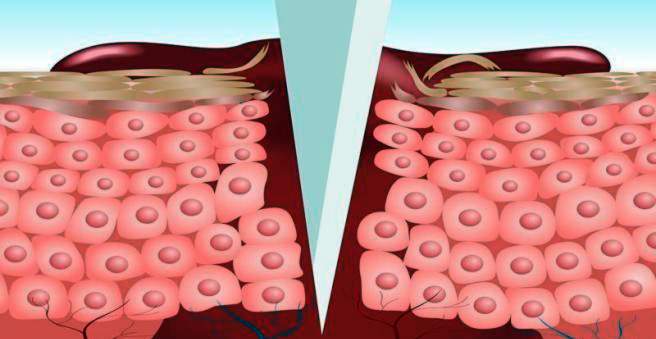Wound healing is a very complex process. Its goal is to seal damage to body tissue to prevent infection, dehydration or other consequential damage. Read more about wound healing phases and the difference between primary and secondary wound healing!

Why wound healing is important
Wound healing is a complicated process involving many different cells, messengers and other substances. It aims to close a wound as quickly as possible – ie a defective area in the tissue of the outer or inner body surfaces. So infections, temperature fluctuations, dehydration and other mechanical irritation should be avoided.
phases of wound healing
Roughly three phases of wound healing can be distinguished, which can overlap and run in parallel:
Exudation or purification phase
Immediately after the wound has formed, the exudation phase (also called the cleansing or inflammatory phase) begins:
Vascular constriction and activation of the blood coagulation cascade (formation of fibrin = protein fibers) will stop any bleeding. Damaged vessel walls are sealed. The release of messenger substances such as histamine triggers a local inflammatory reaction, as a result, among other things, the wall permeability of the finest blood vessels (capillaries) increases. As a result, increased blood plasma occurs in the wound area (exudation).
With this wound secretion (wound fluid) the body tries to clean the wound. It leaches cell debris, foreign bodies and bacteria. This process is supported by immigrated white blood cells of the type macrophages (phagocytes) and granulocytes:
Granulocytes eliminate germs like macrophages. The phagocytes also break down cell debris.
The exudation phase usually lasts up to three days.
Granulation or proliferation phase
In this second phase of wound healing, the smallest blood vessels (capillaries) and connective tissue cells begin to grow into the wound bed from the wound edges and form a solid network. This vascular tissue is deep red, moist-shining and grainy on the surface and is called granulation tissue (lat. Granulum = granules).
The connective tissue cells produce precursors of collagen. These stabilizing protein fibers shrink the wound – so the wound edges are pulled together and the wound surface is reduced.
The granulation phase lasts about ten days.
regeneration phase
In the last section of wound healing, the proportion of tissue water and vessels in the granulation tissue decreases. The previously applied collagen fibers crosslink and stabilize. This is how a first scar tissue forms. The epithelial cells migrating from the wound edges eventually cover the entire wound surface (epithelization).
The regeneration phase can last for several weeks to months. Only after about three months has the scar reached its maximum capacity.
Primary and secondary wound healing
There are basically two ways in which wounds can heal: primary and secondary wound healing.
Primary wound healing
Physicians speak of primary wound healing when the edges of the wound grow together to form a narrow scar. This can happen by itself or with medical assistance (using sutures, staples or patches). The initially bright red, soft scar turns whitish over time and gains strength.
Primary wound healing occurs in uncomplicated occasional wounds (such as lacerations and lacerations) with smooth wound edges and no major tissue loss. And that is when the wound is not older than four to six hours, when it is closed. Wound healing after surgery also proceeds primarily if it is an uninfected (aseptic) surgical wound.
Secondary wound healing
Large-area and / or gaping wounds with greater tissue loss heal secondarily, that is, the wound edges do not grow together directly, but the wound is filled up by granulation tissue from the bottom. Such a secondary healing wound finally has a wider scar surface, which is not very stable to strain and can be cosmetically disturbing.
Also, every wound infected with bacteria should cure secondarily for safety’s sake: In the case of a primary wound closure through a skin suture, the germs in the wound can multiply and lead to a purulent focus (abscess). Thus, in the case of an infected wound, open wound healing with granulation from the bottom to the top is important, so that wound secretion or pus can flow out unhindered to the outside.
A secondary one wound healing It also develops in chronic wounds such as diabetic foot ulcers or bed sores (bedsores).